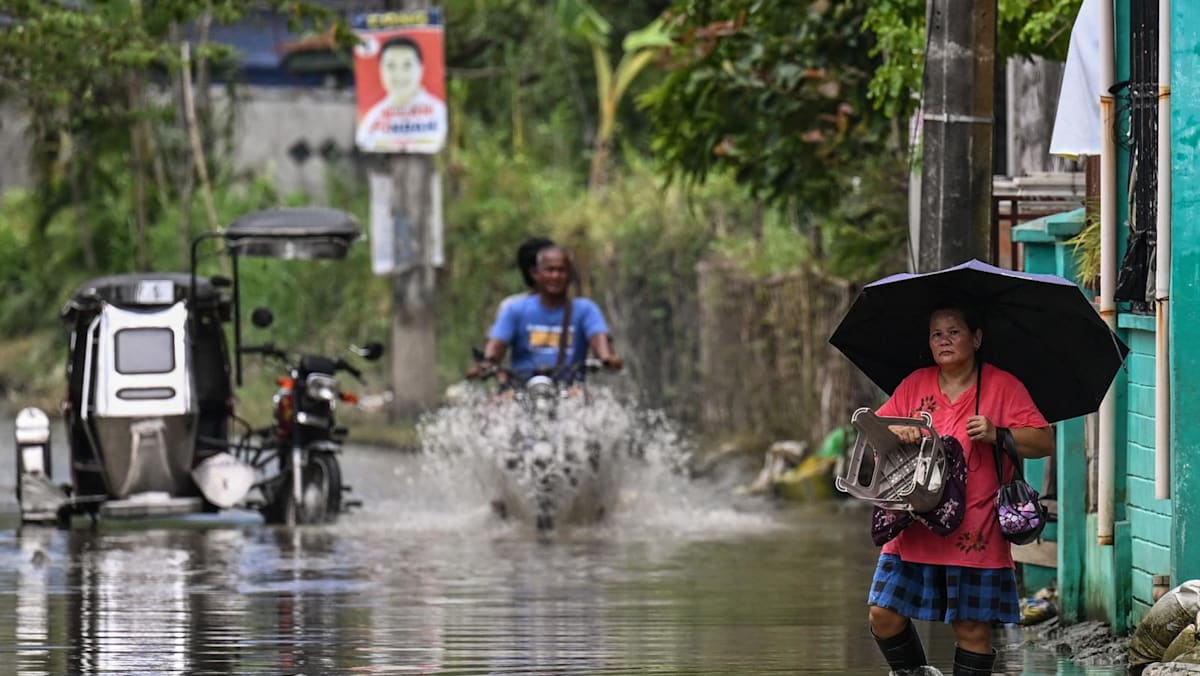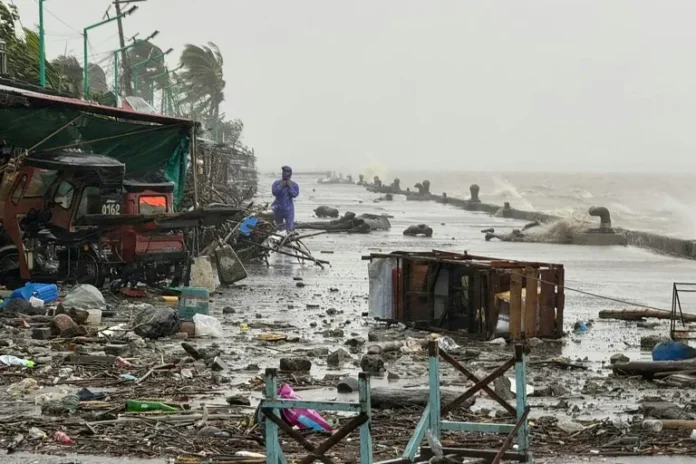The Philippines is reeling after the powerful Super Typhoon Ragasa, the strongest storm recorded globally this year, made landfall on Monday afternoon, forcing thousands of residents to flee their homes.
Storm Hits Northern Philippines with Record Winds

Ragasa struck Panuitan Island, part of the Babuyan Islands in Cagayan province, at around 3:00 p.m. local time (07:00 GMT). The storm unleashed maximum sustained winds of 285 km/h (177 mph), equivalent to a Category 5 hurricane, making it one of the most intense tropical cyclones ever to hit the country.
Although the Philippine Atmospheric, Geophysical and Astronomical Services Administration (PAGASA) reported that the storm has “slightly weakened,” forecasters warned that Ragasa continues to pose life-threatening dangers, including a storm surge exceeding three meters (10 feet), destructive winds, and torrential rainfall.
Evacuations and Infrastructure Damage
Authorities ordered mass evacuations across northern Luzon, particularly in Batanes and the Babuyan Islands, where approximately 20,000 residents live in vulnerable coastal communities. Many evacuees are staying in temporary shelters as schools and public offices remain closed nationwide, including in the capital, Manila.
On Calayan Island, officials reported that strong winds tore off part of a school roof, which landed on a nearby evacuation center. One person sustained minor injuries. Locals described coconut trees being snapped in half by the violent gusts, underscoring the storm’s ferocity.
Flooding, Landslides, and Widespread Disruption
Disaster officials warned of flash floods and landslides across mountainous regions, while low-lying communities brace for significant flooding. Images from affected towns showed streets submerged in water, roofs blown off, and debris scattered across main roads.
The typhoon disrupted transport services, forcing the suspension of ferry operations, while multiple domestic and international flights were canceled.
Taiwan Braces for Heavy Rains
Although Ragasa is not expected to make direct landfall in Taiwan, the storm’s outer bands are projected to drench the island’s eastern coastline. Nearly 300 residents in Hualien County have already been evacuated. Authorities preemptively closed forest reserves, hiking trails, and ferry routes to prevent accidents.
China Prepares for “Catastrophic” Impact
Meteorologists predict Ragasa will maintain its strength as it barrels westward toward southern China. Authorities in Guangdong province have issued alerts, warning residents of a “catastrophic” disaster as early as Tuesday.
The city of Shenzhen announced evacuation plans for nearly 400,000 people. Local supermarkets reported panic buying, with essentials such as bread selling out by midday on Monday.
In Hong Kong, officials cautioned that weather conditions would worsen rapidly by Tuesday evening. The Education Bureau is reviewing whether to suspend classes, while airlines have already begun major cancellations. Cathay Pacific confirmed it will cancel 500 flights, and Hong Kong Airlines said all departures from the city will be suspended.
Philippines Still Reeling from Monsoon Floods
The arrival of Ragasa comes at a time when the Philippines is already struggling with the aftermath of weeks of monsoon-related floods. The recent disasters have sparked public anger, with tens of thousands protesting nationwide on Sunday, blaming government corruption and inadequate infrastructure for the worsening flood crisis.
Analysts warn that the twin impact of back-to-back flooding and Ragasa could further strain relief operations, leaving many displaced families without access to food, clean water, and electricity.
Regional Concerns and Global Context
Ragasa has been labeled the strongest storm on Earth in 2025, highlighting the increasing intensity of tropical cyclones in the Pacific. Experts point to climate change and warmer ocean waters as contributing factors fueling stronger and more frequent typhoons in the region.
The Babuyan Islands, where Ragasa first made landfall, lie just 740 km (460 miles) from Taiwan. These remote communities, already facing poverty and limited infrastructure, are among the most vulnerable to climate disasters.
Ongoing Monitoring and Warnings
PAGASA and international weather agencies continue to monitor Ragasa’s path as it advances westward across the South China Sea. Forecast models suggest the typhoon will weaken into a severe tropical storm before reaching Vietnam later this week, though significant rainfall and flooding remain likely across the region.
Authorities across East and Southeast Asia are urging residents to remain vigilant, stock up on emergency supplies, and follow evacuation orders.
Sources: BBC

